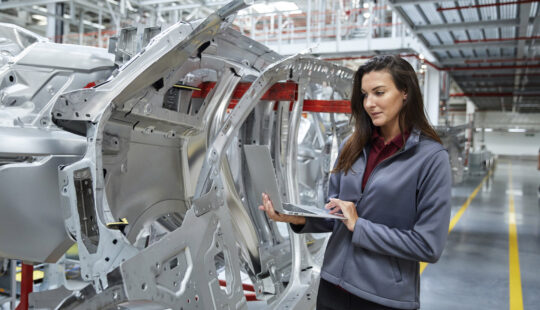More than eight months after the World Health Organization declared the outbreak a pandemic, COVID-19 is still dominating headlines around the world. Countries closing schools, universities, and kindergartens, events canceled or postponed, travel bans implemented, whole cities and regions in lockdown, global markets slumping — the coronavirus has turned the world as we knew it upside down and is a painful reminder of how volatile our world is.
At the same time, the positive environmental side effects of the pandemic have shown us what is possible and how quickly we can drive change. Grounded flights, emptied highways, and shuttered factories caused global carbon-dioxide emissions to fall to levels not seen since 2006 as stay-at-home orders peaked in April 2020. Seven global cities — among them Delhi, Sao Paulo, and New York — experienced a 25% to 60% reduction in fine particulate matter during the lockdown, according to IQAir. COVID-19 has led to a drop of 200 million tons of CO2 in China since the start of the outbreak. That equates to more than 10% of total worldwide emissions.
This by no means mitigates, nor makes any less devastating, the human cost of the outbreak; death, quarantine measures, many businesses and households at financial breaking point are but a few of the consequences. But what this has served to highlight is that when it comes to solving the climate crisis, we can create massive change in a very short period of time.
We are at a turning point. Forecasts by the World Meteorological Organization suggest there is a 20% chance that global temperatures will be 1.5° Celsius (2.7° Fahrenheit) higher than in the pre-industrial average in at least one year between 2020 and 2024. The 1.5°C mark is the level at which countries agreed to cap global warming at the 2015 Paris Agreement. While a new annual high might be followed by several years with lower average temperatures, breaking that threshold would be further evidence that international effects to curb climate change are not working.
Just as we cannot ignore the pandemic and its impact, we cannot continue to ignore climate change and the contribution of our enterprises. Eighty-five percent of the largest carbon emission-intensive companies use SAP to manage their processes, representing a huge opportunity. Digital technologies can help save huge amounts of carbon emissions in major industries like utilities, agriculture, and transport alone. These savings could potentially equal 500 billion trees. Just imagine the impact if all industries joined the effort.
Sustainability combines the vision of the Intelligent Enterprise and SAP’s purpose to help the world run better and improve people’s lives in the most natural way. It also presents a unique opportunity for us to create a lasting, positive impact for future generations. In 2009, SAP set to reduce greenhouse gas emissions back to the levels of 2000 by the year 2020. We achieved that goal more than two years early, despite increasing our employee base fourfold. We are committed to becoming carbon neutral by 2025, and we have reduced our net carbon footprint for the past five years, despite strong growth. Just recently, we were again named software industry leader in the Dow Jones Sustainability Indices for the 14th consecutive year.
But we are not only pursuing our own climate goals. We want to help our customers reinvent how to achieve their sustainability targets. In the transition to new sustainable business models, SAP has a team of innovation services and solutions professionals focused on enabling customers to embrace disruption and transform their business through innovation using intelligent technologies such as Internet of Things (IoT), machine learning, artificial intelligence (AI), blockchain, and advanced data analytics. We are helping companies track carbon emissions from their upstream supply chains to downstream logistics, including procurement, operations, and manufacturing.
Now, we are taking this even further by expanding our solutions to allow customers to measure and reduce carbon emissions along their value chain. We will embed sustainability as a new dimension of success into analytical and transactional applications. Or, as my colleague Thomas Saueressig rightly put it: we add a green line to the top and bottom line for measuring a company’s performance.
Beginning earlier this year, we are running trials with customers from industries like automotive, chemicals, food, and engineering. SAP Product Carbon Footprint Analytics is the first solution available to the market, and our customer Doehler is the first to adopt it. There is more to come, so watch this space for more information!
We want to help our customers to reinvent how they tackle sustainability. We are creating value for them by helping them reach their carbon objectives, and we are helping them make responsible business decisions while taking sustainability into account. They will be able to simulate options for sustainable investment, operational decisions, and managing natural and social resources, just like any other enterprise resource.
With this, SAP takes another important step in turning our customers into sustainable intelligent enterprises – ultimately proving that the Intelligent Enterprise can make sustainability profitable and profitability sustainable.
Christian Klein is CEO of SAP.
This story originally appeared on LinkedIn.



